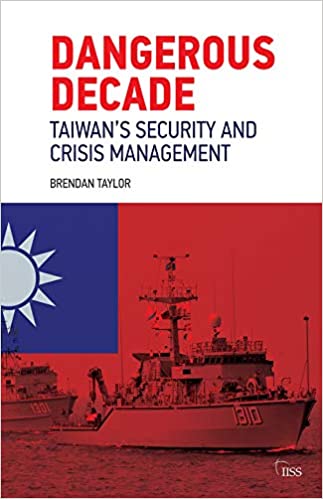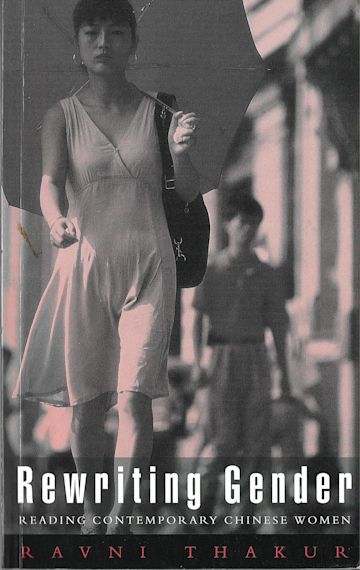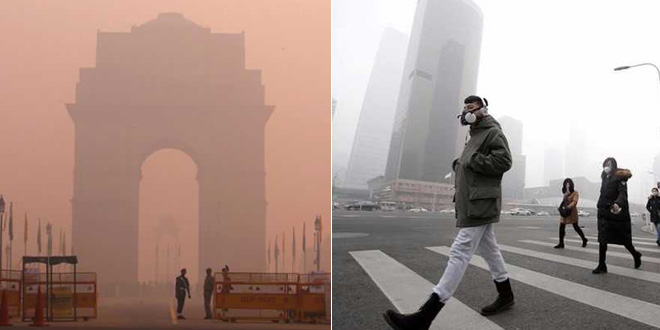Amogh Sharma, Research Intern, ICS

On A ‘conflict hotspot’ is what Brendan Taylor, author of the book ‘Dangerous Decade: Taiwan’s Security and Crisis Management’ calls the situation across the Taiwan Strait. A Professor at the Strategic and Defence Studies Centre at the Australian National University(ANU), Taylor is a specialist in Asia-Pacific and East Asian’ flashpoints’ and Asian security architecture. In the book, Taylor argues that the situation in Taiwan looks increasingly precarious, and flaring tensions could create a major strategic conflict. A crisis could brew slowly as a new Cold War grows to hold over the US and China or erupt suddenly with an accidental collision of military ships or aircraft operating in the Taiwan Strait. He proceeds to say that the possibility of conflicts over Taiwan is real and intensifying by the day and despite this, it is not being treated with the seriousness and urgency the situation deserves. Taylor espouses robust countering mechanisms to deal with the situation to avoid an affair with global ramifications.
The book is structured into four chapters, and the author has used this division to present the situation as of 2019. Building upon previous books by Richard C. Bush and Michael J. Cole that dealt with the previous two decades, Taylor focuses on changes and potential flashpoints in the Taiwan Strait towards the end of the 2010s. The first three chapters deal with the past, present, and potential conflict zones between three powers in the region. The first chapter takes a historical perspective on the conflict, and Taylor describes China, Taiwan and the United States’ stakes in the conflict.
The gulf between the first two stakeholders, Taiwan and China, is growing rapidly today. The author cites a Lowy Institute survey that says those under the age of 29 living in Taiwan consider themselves ‘exclusively Taiwanese’. Post-Mao leaders have adopted a wait-and-see approach; reunification has always been an inevitable fact for the Chinese leadership. However, with each progressing year, younger generations in Taiwan identify lesser and lesser with being “Chinese”, and mainland China is wary of letting this sentiment grow. The author says Xi has been tougher toward Taiwan to retain the image of a single group of people.
The third stakeholder in this scenario is the United States. Washington has traditionally been a deterrent against Beijing’s use of force against Taiwan while at the same time dissuading Taiwan from splitting away completely. But the rapid rate at which Chinese military advancements overcame Taiwanese forces and continued to catch up with the US has resulted in a rise in stronger anti-China sentiments among the American leadership, which Taylor spends significant time dealing with through the actions of the Trump administration such as their reaffirmation of the Taiwan Relations Act in the 2019 National Defence Authorization Act. Growing strain between the US and China has detrimental effects on cross-strait peace, which was seen during Nancy Pelosi’s Taiwan trip in 2022.
Taylor is at home in the second chapter. Using his expertise in South Asian military architecture, he compares the nation’s military capabilities and relates them to varying escalation points. This raises questions at first glance. Does the existence of a certain number of frigates imply that in a conflict, they could be pointed all at once towards Taiwan? It is to be thought about Chinese conflicts with Japan, India, the Philippines and other countries. Will these conflicts not play into the deployment of Chinese forces in the Strait?
Despite an expanding military toolbox, Beijing deemphasised the use of military coercion against the island, fearing an American response. But with American influence slowly declining after Tsai Ing Wen’s reelection, China seems to be getting restless. Taylor cites this as an example of international stakeholders not taking the situation seriously. As Chinese power grows, he notes, so does the number of new methods it can use to address its ‘Taiwan problem’. Due to growing Chinese power and declining US influence, Chinese incentives to navigate this situation via force only increase. Even a slight miscalculation or misconception could be deadly, according to the author.
The author borrows the term tipping points from Malcolm Gladwell, the Canadian journalist, to describe four possible situations in the Cross-Strait scenario which could cause the whole status quo to go awry, forming some of the book’s best reads in Chapter Three. According to the author, these tipping points might lead to the collapse of peace across the Strait and result in a full-blown worldwide conflict, which he begins by describing an ‘accidental’ crossing of Beijing’s ‘red lines’. The “red lines” are a vague concept, almost akin to the US “strategic ambiguity” towards Taiwan. Even sending a senior official for the opening of new American Institute in Taiwan was seen as crossing a Chinese “red line”. Taylor cites historic flashpoints which could easily have caused a kerfuffle such as the accidental Taiwanese missile firing in 2016 and the infamous intentional crossing of the median line by two J-11 fighters in March 2019. Taylor points out that due to the lack of a formal agreement between Taiwan and China like the Code for Unplanned Encounters at Sea for Asian nations, there are no systems of checks and balance between the two.
Taiwan’s salience for the US remains its commercial importance. The idea that Taiwan could become a proxy in this new cold war was brought up, and the author delves briefly on how the Taiwanese can use it to their advantage. Although Taiwan is not a formal US ally, the author believes that the level of US commitment towards Taiwan could influence their relations with other East Asian nations like Japan. He continues that the stakeholders are standing along a hair-triggered border. Even a slight infraction could result in calamitous results.
In the fourth chapter, the author lists possible ways this circumstance could go, and they all get progressively dire, from peace agreements to catastrophic conflict. The policy options like the inclusion of Taiwan in the CPTPP, and potential bargains between the two countries do not even account for the world-changing COVID-19 pandemic or the Presidential race in the United States as it was published in 2019. The policy options suggested by the author emphasise a step-based-situational approach instead of a long-term thought. Overall, the text exhibits Brendan Taylor’s understanding of the dispute with the larger logistics of the three stakeholders involved. The only issue is that three years have passed since its publication, and the “status quo” has changed. The ADIZ intrusions that caused large-scale unrest were absent when the book was published. However, it is an interesting entry for even a lay person to enlighten themselves about the ‘conflict hotspot’ in the east.








